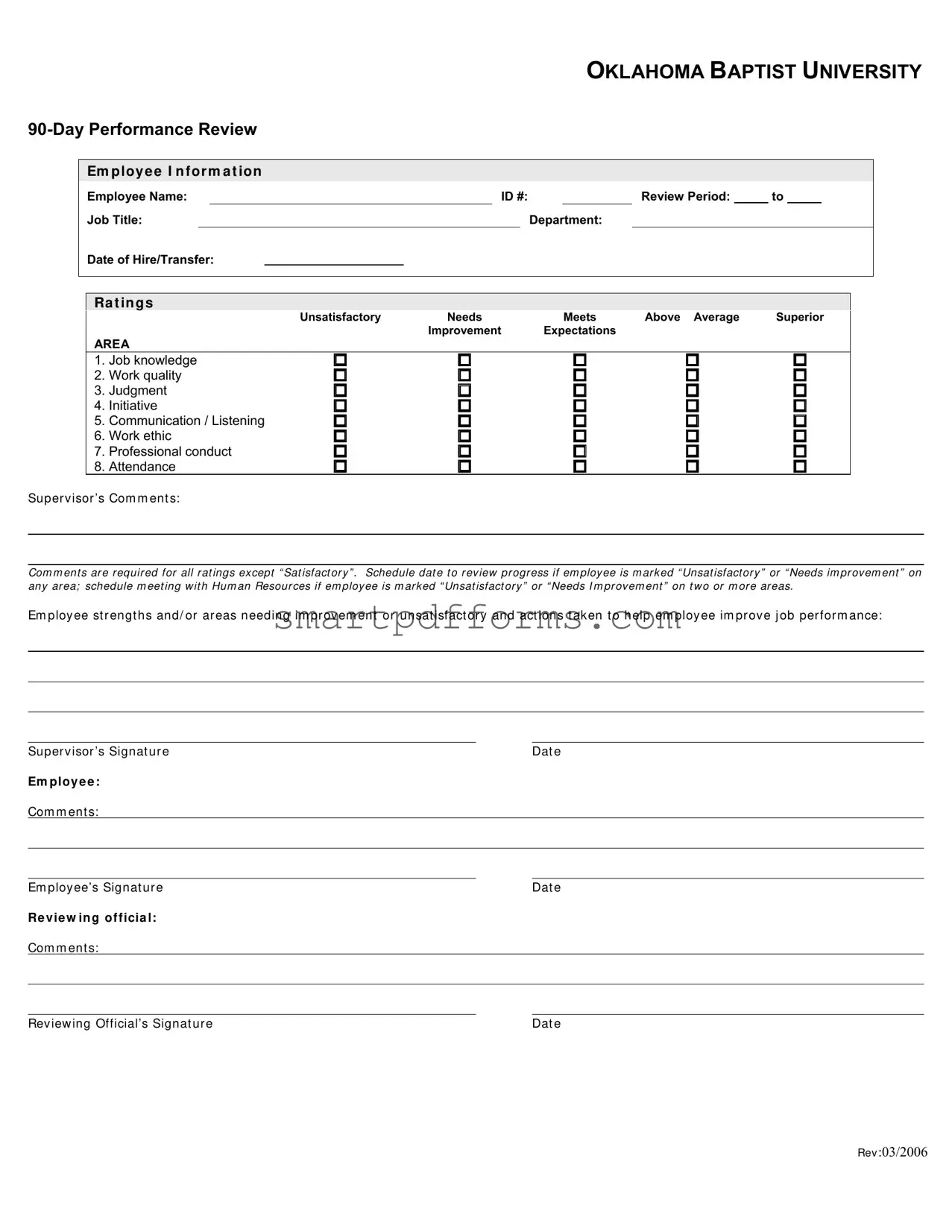The journey of a new employee in any organization is marked by milestones, one of the most significant being the 90-Day Performance Review, as exemplified by the Oklahoma Baptist University’s structured evaluation form. This crucial assessment tool serves to gauge an employee’s integration and performance during the initial period of employment or upon transitioning to a new role. With sections dedicated to Employee Information and Ratings across various competencies such as job knowledge, work quality, judgment, initiative, communication/listening, work ethic, professional conduct, and attendance, the form seeks to provide a comprehensive overview of the individual’s contributions and areas requiring improvement. Supervisors are tasked with offering detailed comments on each rated aspect, highlighting the need for a scheduled review or intervention in cases marked as unsatisfactory or needing improvement. By capturing both quantitative ratings and qualitative feedback, including strengths, areas for enhancement, and actionable steps undertaken, the 90-Day Performance Review Form not only facilitates targeted feedback but also paves the way for constructive dialogue between supervisors and employees, culminating in signatures from all parties involved to validate the process. Through this meticulous approach, the form plays an instrumental role in setting the foundation for ongoing development and success within the workplace environment.

